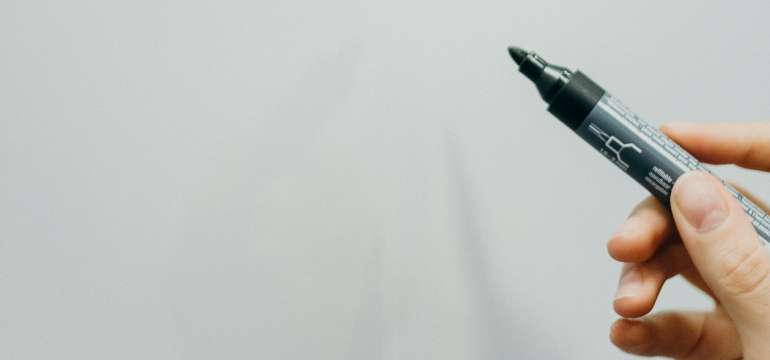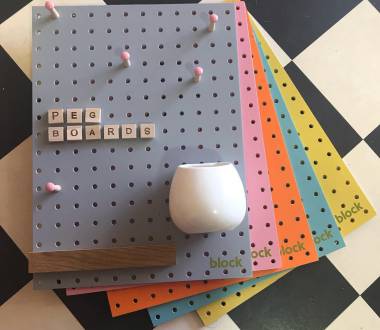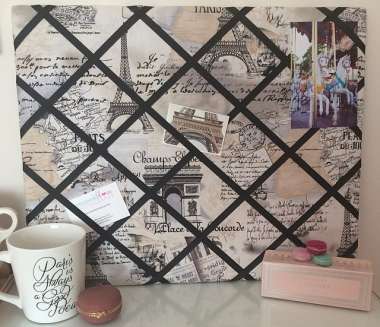When you’re working or living in a space, it sometimes helps to have a central location where you can pin, post, or attach items—concert tickets, important notices, neighborhood flyers, announcements, ads, shopping lists, and to-do items. Some people like the look of a plain brown cork board.
However, for others, it looks too raw or too bland. Or perhaps it’s not a flexible enough option for their purposes. As you renovate and improve your home or another interior space, you’ll need to decide what to use for your own version of the cork board. Explore our list of cork board alternatives for your home, school, or business.
Whiteboards as a Cheap Cork Board Alternative

Perhaps you don’t like having bits of paper fluttering from push-pins like a cork board would have. Why not try a regular whiteboard instead? Whiteboards have a special surface that you can write on with dry-erase markers. Just scribble a note to yourself and erase it later, once the event is over or the task has been done.
For people who are interested in reducing paper usage and saving the trees, a whiteboard is an excellent cork board alternative. It’s quick and easy to wipe off, and you can use markers in different colors to highlight various lists, notes, or other items written on the board. Be sure to clean the board thoroughly after each use, or shadows of the previous notes will remain and begin to cloud the surface.
Whiteboards are among the most cost-effective types of bulletin boards. If you’re on the hunt for a cheap cork board alternative, consider one of these handy surfaces.
Magnetic Memo Boards as a Cork Board Alternative

NAGA Design Magnetic Memo Board
Another eco-friendly and convenient cork board alternative is the magnetic memo board. Instead of push-pins, you have small magnets that adhere to the board’s magnetized surface. Some manufacturers actually combine the whiteboard and magnetic board concepts, for a board that you can draw on and stick magnets on.
You can use the magnets that come with the board or buy some of your own. If you’d like to add character and personality to the magnetic board, choose some unique, fun magnets that show off your fandoms or complement your home’s color scheme.
The magnets can hold up a variety of paper items, but be aware that for thicker papers like cards or invitations, you’ll need more powerful magnets. Also, if you have small children in the home, be sure to keep the magnets out of reach. Magnets can be extremely dangerous to the digestive system if more than one is swallowed.
Pegboards as an Alternative to Cork Board
 Some manufacturers, like Swedish furniture maker IKEA, offer metal or plastic pegboards. The boards hang a half-inch or so out of from the wall, and they are perforated with oblong holes, similar to a cheese grater’s holes, only without the sharp edges.
Some manufacturers, like Swedish furniture maker IKEA, offer metal or plastic pegboards. The boards hang a half-inch or so out of from the wall, and they are perforated with oblong holes, similar to a cheese grater’s holes, only without the sharp edges.
IKEA makes a variety of complementary tools, bins, and hooks that notch securely into these oblong holes.
If you’re looking for a cork board alternative because you want more versatile storage space, the pegboard might be perfect for you. It doesn’t just hold two-dimensional objects like papers—you can attach tiny bins or small shelves to hold spare screws, bobby pins, loose change, lost buttons, pens, or other items.
Decorated Cork Board Alternative
 Of course, if your main problem with cork boards is their unattractive appearance, you can always dress them up. One easy way to do that is to paint a pattern across the cork board’s surface.
Of course, if your main problem with cork boards is their unattractive appearance, you can always dress them up. One easy way to do that is to paint a pattern across the cork board’s surface.
Some people like to DIY padded bulletin boards, often called “French ribbon bulletin boards,” or simply “ribbon bulletin boards.”
Use a standard framed cork board as the base and choose an attractive fabric for the board’s surface. Purchase a wide ribbon in a color that complements the fabric. You’ll also need batting, tacks with round heads, a ruler, a pair of sharp scissors, and a staple gun.
Cut the batting to fit the board and staple it in place. Next, lay out your fabric with the print side or front side down. Place your cork board batting-side-down against the backside of the fabric.
Pull the fabric tight and fold the corners, stapling as you go. Now you have a nice padded board. Arrange the ribbons in the crisscrossing pattern you want and secure them with tacks at their intersection points. Staple the ends of the ribbons to the back of the board, and you have a fantastic alternative to cork board in its natural state.
Whether you’re outfitting a home, schoolroom, break room, or office space, a central location for announcements and notes is handy to have. With these alternatives to the traditional cork board, you can customize your own solution and create a usable space for everyone.
- Using Borax in the Dishwasher - May 27, 2020
- Towel Ring Height and Other Fixtures: Proper Measurements - May 1, 2020
- Homemade Paint Removers for Every Surface - April 27, 2020
